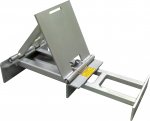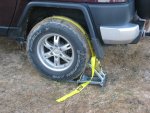Dirt Rider
Well-known member
Have not seen a lot of information on how to deal with the anchor vehicle while winching out another vehicle. Should you leave it in park, neutral, drive, leave parking brake on or? If possible I like to have my front bumper against a rock or tree, or better yet my rear anchor point attached to something. I would think that if you left it in park there is a chance to damage the transmission.


